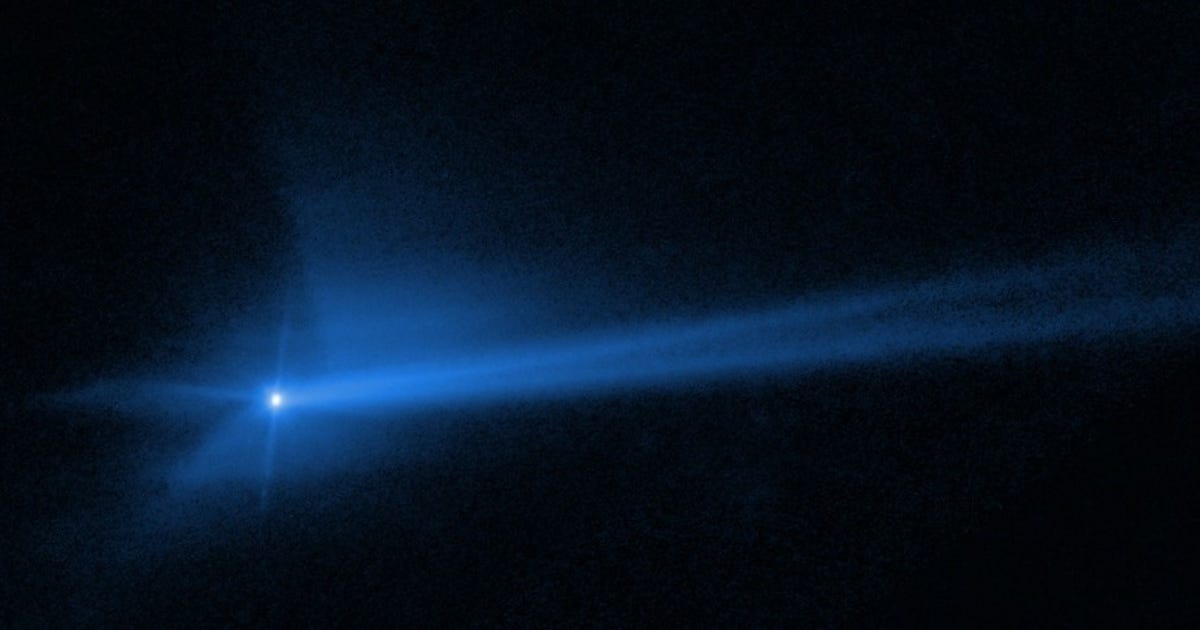
NASA celebrated the destruction of a spacecraft in 2022 when the agency successfully conducted its Double Asteroid Redirection Test (DART) mission by smashing an asteroid. We now have a stunning new time-lapse video of the DART aftermath courtesy of the Hubble Space Telescope. Hubble had “a ringside seat to the demolition derby,” NASA said.
Hubble, a joint project from NASA and the European Space Agency, captured views of asteroid Dimorphos over the course of several days during the DART mission. We’ve already learned a lot about the impact. We knew Dimorphos coughed up a whole lot of debris, for example.
The new video highlights how material streamed off Dimorphos in a cone shape and then formed into a comet-like tail that briefly split into a fork. “Astronomers didn’t know what to expect,” NASA said in a statement on Wednesday. “They were surprised, delighted, and somewhat mystified by the results.” Give it a watch:
Dimorphos is a smaller asteroid in orbit around larger asteroid Didymos. DART was designed to see if a Hollywood-movie-style Hulk smash could alter the orbit of an asteroid, and it worked beautifully. This is a trick we might be able to use in the future should we spot a dangerous asteroid on a collision course with Earth.
The video is helping scientists better understand how Dimorphos reacted to the impact of the spacecraft. “Hubble’s time-lapse movie of the aftermath of DART’s collision reveals surprising and remarkable, hour-by-hour changes as dust and chunks of debris were flung into space,” NASA said.
NASA points out several stages the asteroid went through. First, an ejecta cone formed. Next, the debris shaped into a spiraling swirl tracing the smaller asteroid’s orbit around Didymos. This happened about 17 hours after impact, creating rotating pinwheel-like shapes.
“This is really unique for this particular incident,” said Jian-Yang Li of the Planetary Science Institute. “When I first saw these images, I couldn’t believe these features. I thought maybe the image was smeared or something.” Li is lead author of a study on the ejecta published in the journal Nature on Wednesday.
Dying Space Missions Remembered in Inspirational Final Images
The third stage involved the formation of a showy, comet-like tail caused by the pressure of sunlight, something NASA described as “resembling a windsock caught in a breeze.” The tail later split into two for a few days.
There will be more to come. ESA is scheduled to launch its own Hera mission in 2024 to conduct a detailed post-impact survey of Dimorphos. It’s all in the name of protecting our planet from future threats.
DART was the first mission of its kind. Scientists didn’t know exactly what to expect and they’re still working through what the data and imagery shows. “We’ve never witnessed an object collide with an asteroid in a binary asteroid system before in real time, and it’s really surprising,” Li said. “I think it’s fantastic. Too much stuff is going on here. It’s going to take some time to figure out.”

